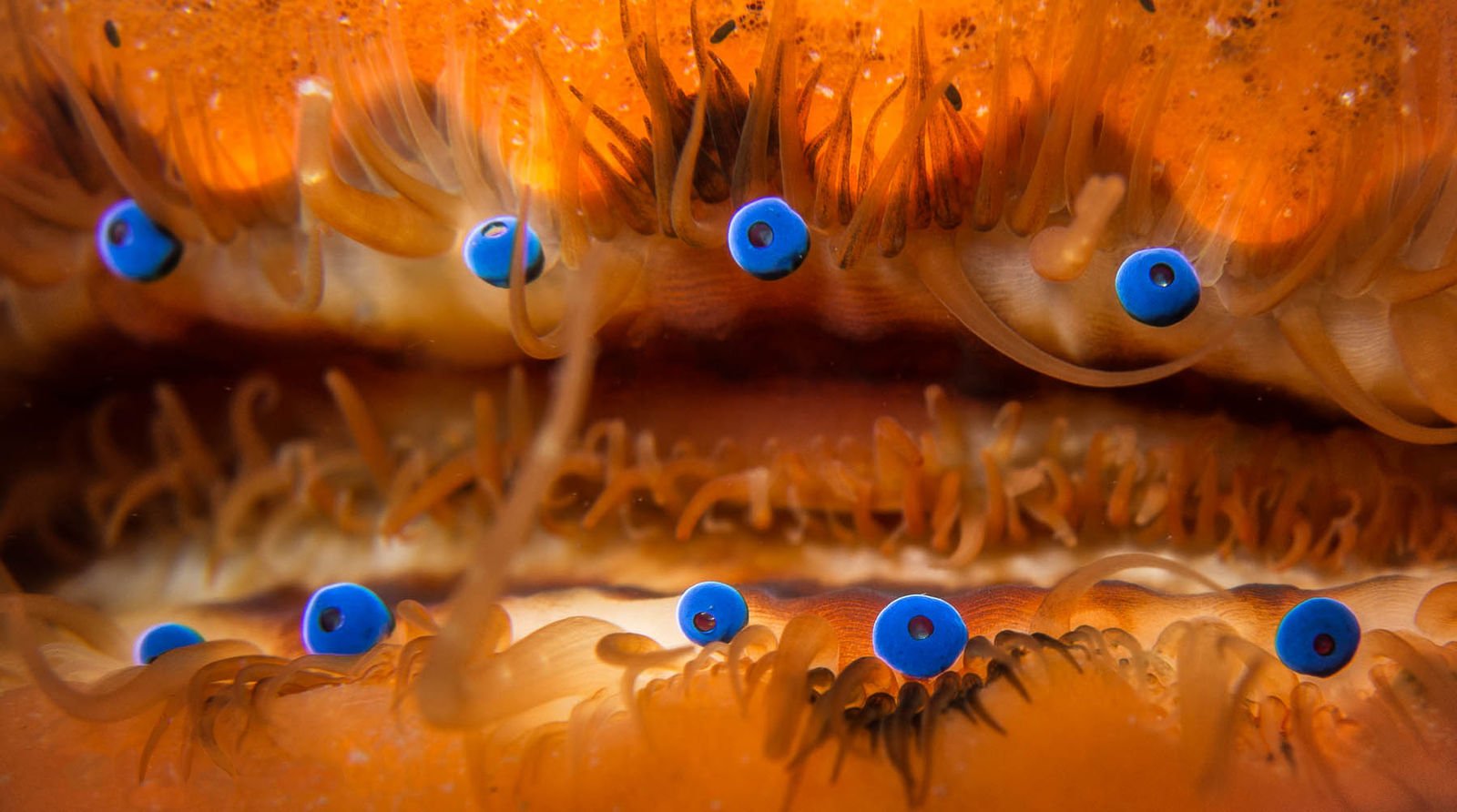The doughboy scallop looks like disembodied dentures covered in muppet hair

The fact that the doughboy scallop looks Gritty’s discarded false teeth isn’t even the weirdest thing about it. Like a creature straight out of Bloodborne lore or a trypophobic’s nightmare, this Australian mollusc is quite literally covered in eyes.
Found in the shallow waters of south-eastern Australia, with sightings off the coast of Western Australia, South Australia, Victoria, New South Wales and Tasmania, the doughboy scallop (Mimachlamys asperrima) spends most of its time on the sandy seabed. It can also be found among the rocks and mud, sometimes attached to a sponge, an oyster, or a similarly sedentary animal.
The doughboy scallop’s shell measures around 11 cm long, which can come in hues of orange, pink or purple. It has short tentacles emanating from its mantle, which allow it to feel its way around and detect changes in its immediate environment, such as the water’s oxygen and pH levels.
Its mantle is also adorned with bright blue fluorescent eyes – dozens of them. With up to 200 eyes, each no bigger than 1 mm, running along the outer margin of its mantle, the doughboy scallop is more complex than its humble reputation would let on.
Here’s a close-up of those eyes, which are honestly very creepy:

Scallop eyes have become the subject of some high-profile research in recent years. In 2017, a team led by researchers at the Weizmann Institute of Science in Israel studied the eyes of the king scallop (Pecten maximus), a species found in the northeast Atlantic Ocean.
Publishing in Science, the researchers found that these eyes don’t focus incoming light like ours do, but instead reflect it, allowing scallops to see a peripheral and central view at the same time. The discovery suggests that scallop eyes could inform more powerful telescope designs.
Another study, published in Current Biology in 2019 found that scallop eye pupils are able to dilate and contract in response to light, which means they’re even more dynamic than previously thought.
The main predator of the doughboy scallop is the eleven-armed seastar (Coscinasterias calamaria), the largest starfish in southern Australia and New Zealand.
One way to escape them is swimming haphazardly away. By sucking in water and jetting it out, scallops use propulsion to nope their way out of a precarious situation, and it sure does look strange, like one of those wind-up teeth toys:
Video by Eb Rowlands
Here’s a whole bunch of scallops, filmed off the coast of the United States, all swimming at once, to bizarre effect:




